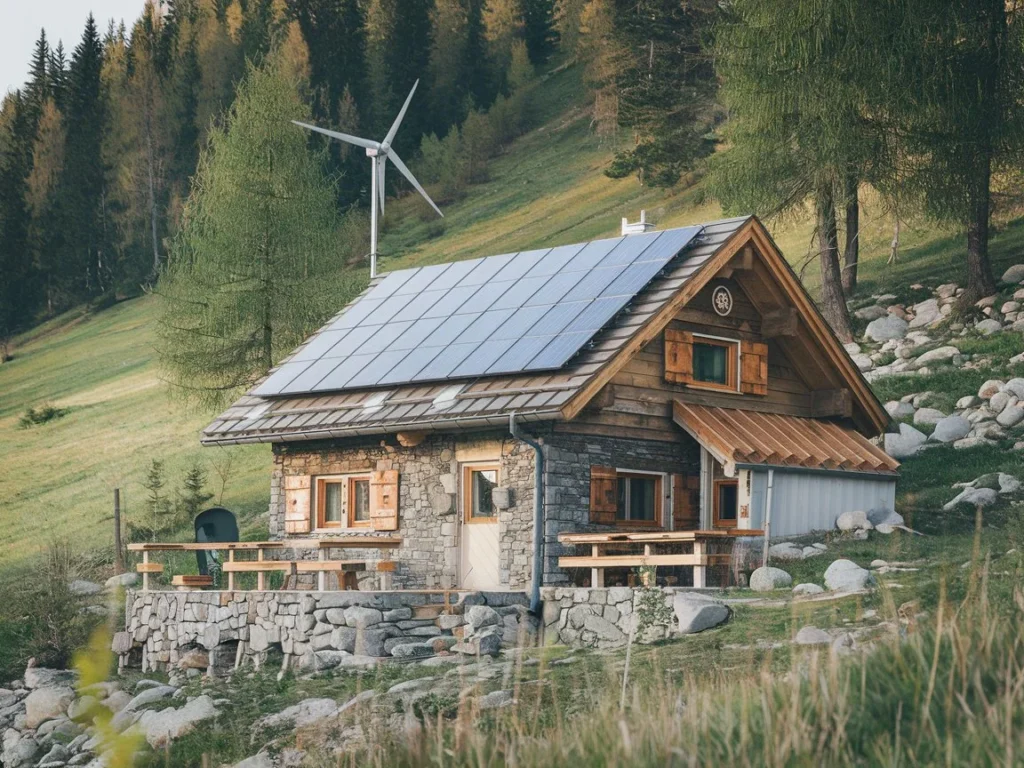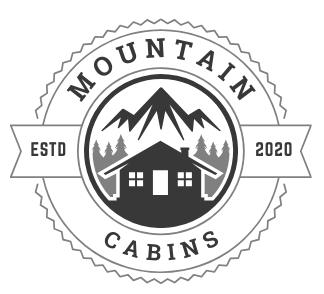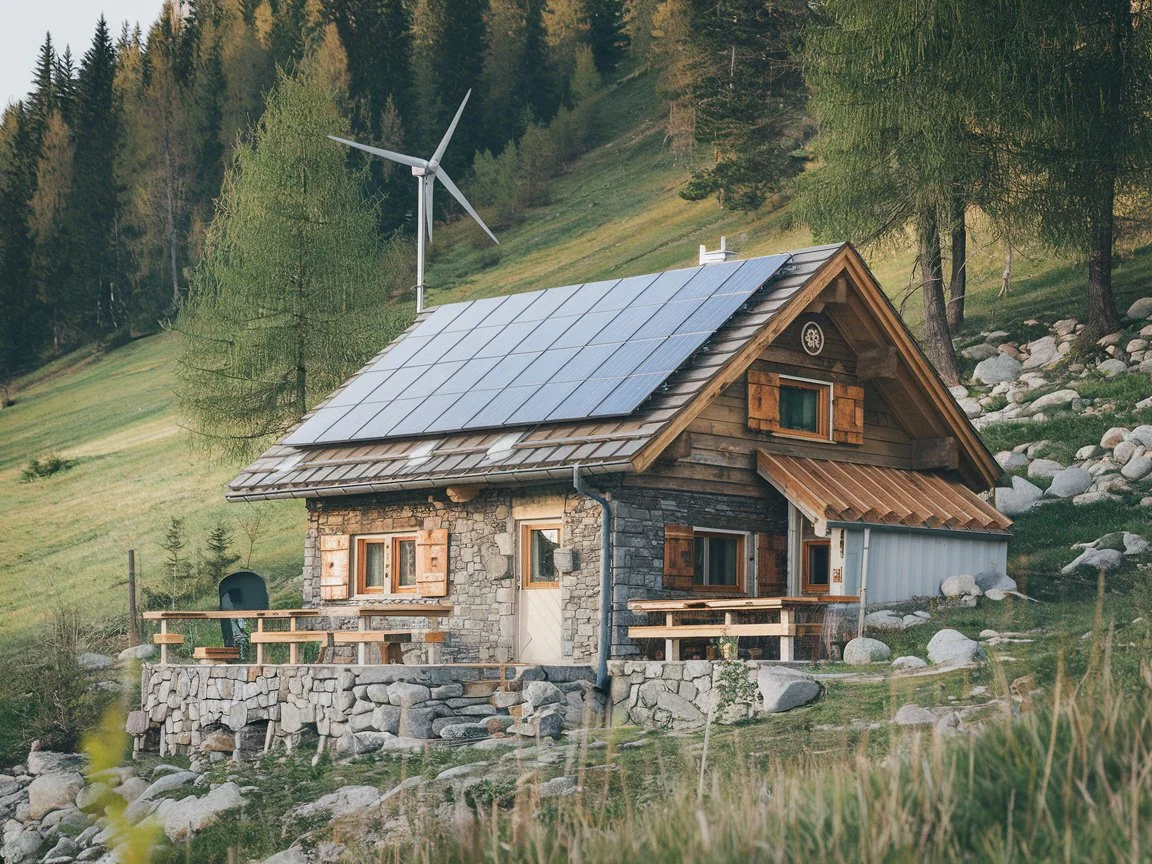
Introduction
With the rise of eco-conscious travel, many adventurers are seeking sustainable accommodations that align with their values. Eco-friendly cabin stays have become increasingly popular, offering travelers a unique way to enjoy the mountains while minimizing their environmental impact. Choosing a cabin that prioritizes sustainability not only helps protect the environment but also ensures that your vacation contributes to the conservation of the natural beauty you’re visiting.
In this guide, we’ll explore the key features that make a cabin eco-friendly, how to choose the right property for your stay, and the environmental benefits of supporting these green initiatives. We’ll also share tips on how to be an eco-conscious guest, enjoy low-impact activities, and contribute to sustainable tourism practices. Whether you’re a seasoned traveler or new to eco-friendly living, this guide will help you make informed choices for your next mountain getaway.
1. What Makes a Cabin Eco-Friendly?
Eco-friendly cabins are designed with sustainability in mind, using a combination of innovative features, building materials, and practices that minimize their environmental footprint. From energy-efficient systems to waste reduction strategies, these cabins offer a way to experience the mountains while supporting the health of the planet. Here are some key features that make a cabin eco-friendly:
Renewable Energy and Water Conservation
Many eco-friendly cabins rely on renewable energy sources such as solar panels, wind turbines, or hydropower to reduce their reliance on fossil fuels. These systems power the cabin’s lights, appliances, and heating systems, offering a clean and sustainable way to run your stay. Additionally, water conservation is a priority in eco-friendly cabins, with many using rainwater collection systems, low-flow faucets, and efficient showerheads to reduce water waste.
Waste Reduction and Composting
Eco-friendly cabins often incorporate systems to manage waste in an environmentally conscious manner. Composting toilets are common in off-grid cabins, offering a sustainable alternative to traditional plumbing. Some cabins also provide recycling programs, making it easy for guests to dispose of waste responsibly.
Eco-Friendly Building Materials
Sustainable cabins often use recycled and locally sourced materials such as bamboo, reclaimed wood, and low-impact concrete. These materials reduce the carbon footprint of construction and ensure that the cabin blends harmoniously with its natural surroundings. Energy-efficient insulation and double-glazed windows also help reduce the cabin’s energy consumption, keeping it warm in winter and cool in summer.
Off-Grid vs. Grid-Connected Eco-Friendly Cabins
While some eco-friendly cabins are completely off-grid, relying on renewable energy sources, others are connected to the local power grid but incorporate sustainable design elements. Off-grid cabins offer a more self-sufficient experience, requiring guests to be mindful of their energy use. Grid-connected eco-friendly cabins may use energy-saving appliances and efficient heating systems to minimize their impact on the environment.
2. Choosing the Right Eco-Friendly Cabin
When selecting an eco-friendly cabin for your stay, there are several factors to consider to ensure that the property aligns with your values and sustainability goals. Here’s how you can find and book the perfect green getaway:
Finding Green-Certified Cabin Rentals
Look for cabins that have earned green certifications such as LEED (Leadership in Energy and Environmental Design), Green Globe, or EarthCheck. These certifications ensure that the cabin meets strict environmental standards, covering aspects like energy use, water conservation, waste management, and sustainable building practices. Certified properties are often subject to regular inspections, providing peace of mind that you’re choosing a truly eco-friendly accommodation.
Platforms and Resources for Booking Eco-Friendly Accommodations
Several booking platforms specialize in sustainable travel, offering an easy way to search for eco-friendly cabins. Websites like EcoBnB, GreenKey, and Sustainable Stays provide a curated list of green accommodations. Additionally, platforms like Airbnb and Vrbo allow you to filter search results for sustainable properties by looking for features like solar power, off-grid systems, or composting toilets. Be sure to read the property descriptions carefully to ensure the cabin meets your eco-friendly criteria.
What to Look for in an Eco-Friendly Property
When searching for an eco-friendly cabin, look for specific features that reflect the owner’s commitment to sustainability. Some of the key elements to consider include:
- Solar panels or renewable energy systems
- Rainwater collection systems
- Composting toilets or waste-reduction systems
- Use of sustainable materials like bamboo, reclaimed wood, or natural stone
- Energy-efficient appliances and low-energy lighting
By selecting cabins with these features, you can ensure that your stay has minimal environmental impact.
3. The Environmental Benefits of Eco-Friendly Stays
Staying in an eco-friendly cabin not only enhances your travel experience but also provides significant environmental benefits. Here are some of the key advantages of choosing a sustainable cabin stay:
Reducing Your Carbon Footprint
One of the primary benefits of staying in an eco-friendly cabin is the reduction of your carbon footprint. Many green cabins use solar power or wind energy to provide electricity, which significantly reduces reliance on fossil fuels. By using sustainable energy sources, you can help reduce the cabin’s environmental impact and support the transition to cleaner energy. This is especially impactful when compared to traditional accommodations that rely heavily on grid energy.
Supporting Conservation Efforts
Eco-friendly cabins are often owned by individuals or companies who are committed to environmental conservation. Many cabin owners are passionate about preserving the natural beauty around their properties, and they actively support wildlife protection, habitat preservation, and other conservation initiatives. By choosing to stay in these cabins, you’re supporting these efforts and helping to fund sustainable practices that contribute to the long-term health of the local ecosystem.
Promoting Local Wildlife Protection
The construction and operation of eco-friendly cabins often take into account the impact on local wildlife. For example, eco-cabins may be designed to blend into the environment with minimal disruption to animal habitats. In addition, many eco-friendly properties promote wildlife protection by encouraging guests to respect animals and their natural surroundings. Staying in such a cabin gives you the opportunity to observe wildlife without negatively affecting their habitats.
By choosing to stay in an eco-friendly cabin, you’re contributing to these positive environmental impacts, allowing you to enjoy nature while supporting its protection and sustainability.
4. Sustainable Activities to Enjoy During Your Stay
Eco-friendly mountain cabins not only offer a sustainable place to stay, but they also provide opportunities for low-impact outdoor activities that allow you to connect with nature while minimizing your environmental footprint. Here are some activities to consider during your stay:
Low-Impact Outdoor Activities
The mountains are a playground for nature lovers, and there are many ways to enjoy the outdoors while keeping your environmental impact minimal. Consider these activities:
- Hiking: Take advantage of the many scenic trails available around eco-friendly cabins. Hiking is a great way to explore the area, immerse yourself in nature, and leave only footprints behind.
- Biking: Many eco-cabins are located near biking trails, providing an opportunity to explore the landscape while reducing the need for motorized transport.
- Nature Walks: Take guided nature walks to learn about the local flora and fauna. These walks often focus on the natural history of the area and the importance of conservation.
How to Reduce Your Environmental Impact
While enjoying your outdoor adventures, it’s essential to follow eco-conscious practices to reduce your environmental impact. Here are some ways to be more sustainable during your stay:
- Follow Leave No Trace principles: Respect nature by minimizing your impact on the environment. Stick to marked trails, pack out all trash, and avoid disturbing wildlife.
- Recycle and compost: Make use of the recycling bins and composting facilities provided by your cabin. If none are available, bring your own reusable bags for waste.
- Responsible campfires: If you plan to enjoy a campfire, ensure it’s in a designated area, and follow the cabin’s guidelines for safely building and extinguishing fires.
By participating in these sustainable activities, you’ll not only enjoy the beauty of the mountains but also contribute to their preservation.
5. How to Be an Eco-Conscious Guest
As an eco-conscious traveler, you play a vital role in reducing your environmental impact during your stay. By following a few simple practices, you can ensure that your time at a mountain cabin is as sustainable as possible. Here are some tips for being an eco-conscious guest:
1. Reduce Waste and Conserve Resources
One of the easiest ways to make a positive impact is by being mindful of your consumption. Reduce waste by using reusable items like water bottles, shopping bags, and containers. Opt for paperless receipts and avoid excessive packaging when shopping locally. Additionally, always be conscious of water usage and energy consumption—take shorter showers, turn off lights when not in use, and unplug electronics when possible.
2. Bring Reusable Items
To further minimize your waste, bring along reusable items like:
- A water bottle to stay hydrated without relying on single-use plastic bottles.
- Reusable shopping bags to carry groceries or supplies.
- Cloth napkins and zero-waste products that reduce packaging waste.
3. Be Mindful of Energy Consumption
In many eco-friendly cabins, power is sourced from renewable energy, but it’s still important to be mindful of your usage. Turn off lights, heaters, and appliances when not in use, and make use of natural light during the day. Be cautious with heating systems, especially in cabins using wood stoves or space heaters, to avoid overuse of fuel.
4. Support Local Communities
Eco-friendly travel isn’t just about the cabin—it’s about supporting the local community as well. Buy locally produced food, crafts, and products to reduce transportation-related emissions and help the area’s economy. Many eco-cabins are located in rural or remote areas, so your support can make a meaningful difference to small businesses.
By following these tips, you’ll not only enjoy your stay but also contribute to the sustainability of the cabin and its surrounding environment.
6. The Future of Eco-Friendly Cabin Stays
The eco-friendly travel industry is rapidly evolving, with more travelers seeking sustainable options for their vacations. As demand for eco-conscious travel experiences continues to grow, the future of eco-friendly mountain cabins looks promising. Here’s what you can expect:
The Rise of Sustainable Tourism
Sustainable tourism is gaining momentum as travelers become more aware of the environmental impact of their trips. As part of this trend, more mountain cabins are adopting green practices, such as zero waste initiatives, water conservation, and energy-efficient technologies. This shift aligns with the broader movement toward responsible travel, where preserving natural landscapes and supporting local communities are top priorities.
Increased Focus on Renewable Energy
In the coming years, we can expect to see more eco-cabins powered entirely by renewable energy sources. Solar power, wind energy, and geothermal heating are becoming more accessible and affordable, making it easier for cabin owners to operate sustainably. As technology advances, the integration of smart grids and battery storage systems may further enhance energy efficiency in remote cabins.
Sustainable Building Materials and Designs
Architectural designs for eco-friendly cabins will continue to evolve, with more emphasis on natural and sustainable materials such as bamboo, hempcrete, and reclaimed wood. Cabins will feature more green roofs, passive design principles, and rainwater harvesting systems to reduce environmental impact. Furthermore, eco-cabins will be built to seamlessly blend into their natural surroundings, preserving the aesthetic beauty of the mountains while offering minimal disruption to the ecosystem.
Collaborations with Local Conservation Efforts
As eco-friendly cabins grow in popularity, expect to see more collaborations between property owners and local conservation organizations. These partnerships can help fund habitat preservation, wildlife protection, and sustainable land management practices. Many eco-cabin owners are already committed to supporting conservation efforts, and this trend will only continue to grow as travelers prioritize sustainability.
In conclusion, the future of eco-friendly cabin stays is bright, and the industry is poised to offer even more sustainable options in the coming years. By choosing an eco-friendly cabin, you’re not only enhancing your travel experience but also supporting a movement that prioritizes the planet’s health.
Conclusion
Eco-friendly mountain cabins offer a perfect blend of sustainability, comfort, and natural beauty, allowing travelers to experience the wonders of the outdoors while minimizing their environmental impact. From reducing your carbon footprint to supporting conservation efforts and practicing eco-conscious travel, these cabins provide an opportunity to enjoy nature responsibly.
As eco-friendly tourism continues to grow, the future of cabin stays looks promising, with more properties adopting green technologies and sustainable practices. Whether you’re looking for an off-grid retreat or a luxury cabin with minimal environmental impact, there’s an eco-friendly cabin that suits every type of traveler.
When planning your next mountain getaway, consider the benefits of choosing a sustainable cabin. By making eco-conscious decisions, you can enjoy a memorable and environmentally responsible vacation that supports the preservation of the mountains and their ecosystems for future generations.

